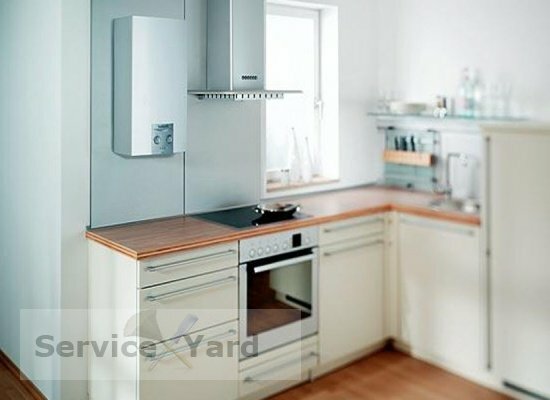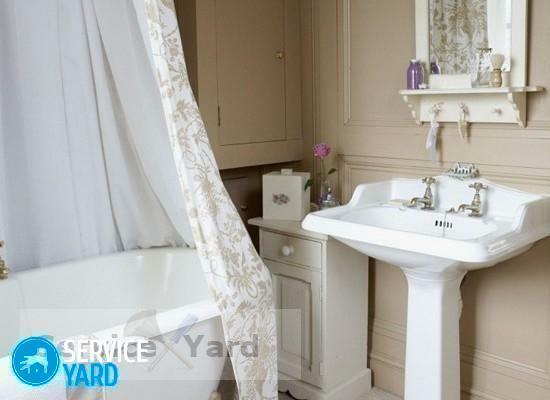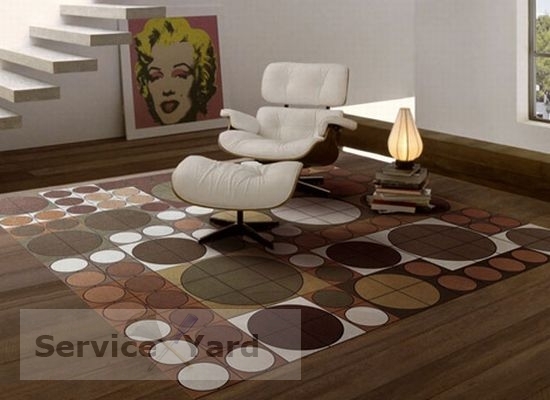Connecting the toilet to the sewage system can be done in several ways, and each of them uses a connecting fitting of one type or another - standard or from improvised means. The applied techniques have their pros and cons, but the general requirement for them is the reliability of the result. Accordingly, the quality factor of the device connection depends on the characteristics of the fittings being installed and the quality of their installation.
One of the methods - connection with a corrugated cuff - has been used relatively recently and, due to a number of advantages, is widespread. Such a corrugation for a toilet is simple in design, but has a number of design and operational features.
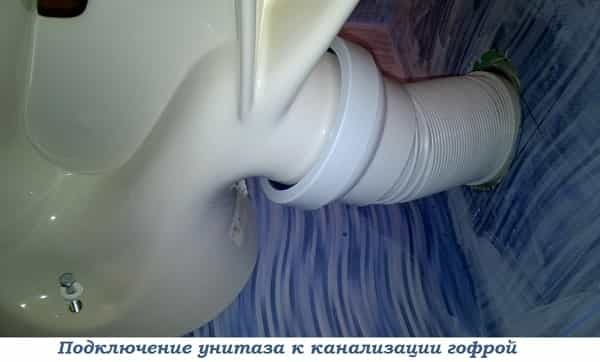
Since ignoring any nuances associated with the sewage system is fraught with a leak that is by no means clean water, let's take a closer look at everything that needs to be known about the correct use of this type of connecting fittings.
What is a toilet corrugation and why is it needed
An important advantage of corrugated pipes over smooth-walled pipes is the ability to give them the desired configuration without crushing the walls. This potential is highly demanded in a wide variety of situations, therefore flexible connecting elements of this design are produced in different lengths and diameters.
A type of corrugated pipe is a toilet corrugation - a free-flow fitting, through which the drain pipe of the toilet bowl is connected to the inlet of the sewer. The product is a thermoplastic sleeve (sometimes with an inner reinforcing coating), the middle part of which has an accordion cross-section. One end of the fitting is designed to be inserted into the neck of the sewer pipe, the other is put on the toilet bowl drain.
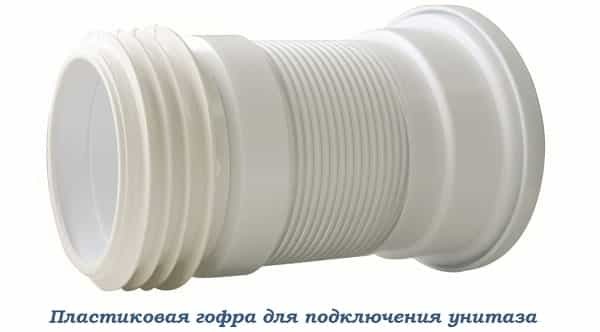
The design is simple, but in some cases irreplaceable. For example, the toilet was connected to the sewer with a rigid knee and was dismantled before the repair of the bathroom. If the level of the repaired floor has changed, but the sewer pipes remain the same, it will no longer be possible to connect the device in the same way. In such situation for connections toilet bowl with sewerage the easiest to use corrugated drain.
You cannot do without corrugations even when the sanitary device needs to be shifted horizontally relative to the sewer pipe. A flexible fitting is also convenient for arranging a temporary toilet bowl for the period of toilet repair.
Types and sizes of corrugated pipes
Corrugations for toilet bowls are universal products, but they are produced with differences in some parameters. These fittings are made soft - with a middle part made of polymer only, and rigid - with walls, spirally reinforced with steel wire around the perimeter.
Corrugations the first of the kind easier to install, but less durable. In an extended position, such a pipe can sag over time with crumpled edges, especially if hot water is drained into the toilet. Reinforced fittings are stronger and more durable. Since the stiffness of the middle part makes it difficult to install the product, both end assemblies of such products have a pivoting design.
When connected to a sewer toilet with an oblique drain, a reinforced corrugation is often the only reliable option.
For ease of use, corrugated fittings are produced in different lengths. For this parameter corrugations for the toilet can be conditionally divided into 2 typesthe sizea: short and long. The short ones are approximately 20 cm long when compressed, and 30 cm or more when extended. For long corrugations, these dimensions are about 30 and 50-90 cm, respectively. When choosing a product in length, they are guided by the distance from the drain neck of the toilet bowl to the junction with the sewer.
Corrugated lintels are also produced with a different arrangement of a cuff that is put on the toilet bowl drain - it can be not only on the axis of the corrugation, but also at an angle of 45 or 90 degrees. To her. This adds options for the location of the device when it needs to be installed offset from the sewer pipe.
Flexible connectors also have fixed characteristics tied to standards for toilets and pipes. Interior diameter middle part corrugations is 110 mm. To connect to the sewage system, the fitting has on one side a rigid round-section pipe with an inner diameter of 80-85 mm, on which outside along the perimeter there are several elastic O-rings - for a tight fit to the walls of the reception neck.
On the other end, the corrugation has a plastic cuff with an outer diameter of 134 mm and a rubber seal with a tapered section from the inside. The smaller inner cuff is 75 mm and is designed to fit snugly over the toilet flush.
How to choose the right one and what to look for
Let's make a reservation right away - when buying a toilet corrugation, you should not save. The models differ in wall thickness, plastic density, quality of rubber seal and smoothness of the fitting surface. And how reliable the connection of the toilet bowl to the sewer pipe will be in your toilet depends on each of these parameters.
How same right choose a corrugation for the toilet? First of all, you need to choose the correct length of the corrugation. To do this, measure the distance from the toilet to the intake. The ideal choice would be a fitting that, once installed, will stretch 20-50% of the minimum length.
The corrugation for the toilet has a good margin of flexibility, but the bends of its middle part in the working position should still be smooth - otherwise, on the turns of the pipe, the ribs-folds will be under load, and over time the product in this place break. An angled ferrule fitting or an eccentric adapter may be required to meet this requirement.
Choosing a corrugation from several possible options, preference should be given to a product with thicker walls. In addition, the fitting must be free of surface defects and wrinkles on the seals.
Domestic-made corrugated adapters and even cheaper Chinese models are inferior in quality to products of foreign manufacturers. Their most common drawback is poor fit of the pipe to the inner surface of the sewer intake neck. To eliminate this, the connection point has to be additionally sealed from the outside.
Hence the conclusion - for responsible places it is better to purchase imported drain fittings (Equation - France, McAlpine - Scotland, Jimten - Spain, AlcaPlast - Czech Republic).
Advantages and disadvantages of toilet flaps
Modern corrugated fittings are made from high quality polypropylene, and this material has some advantages over cast iron. In addition, such products have some "advantages" due to their design.
Advantages of corrugation for toilets:
- Flexibility.
As a result, there are many options for the location of the sanitary device relative to the place of connection to the sewage system.
- Ease of installation and the ability to install on your own - both instead of a rigid elbow, and when replacing a damaged flexible adapter.
- Low price even for well-known brands.
Flexible adapters also have disadvantages:
- Low strength characteristics - this "minus" causes a number of limitations. The pipe must be installed only in an open way; it cannot be embedded in the base under the mortar. The walls of the corrugation can be easily damaged with a sharp object or open flame. Over time, the sleeve can sag under load, crumple in a bend, lose shape when hot water is drained into the toilet. Polypropylene is often damaged by rodents.
When you need to replace the corrugation
The service life of corrugated adapters, when properly installed, is measured in years, and the durability of products from well-known manufacturers is naturally higher. However, over time, high-quality corrugations need to be replaced.
Determining when it is time to change the pipe is usually not difficult. The most common damage to corrugations is a violation of their integrity and loss of elasticity of the seals. In both cases, the depressurization of the connection will manifest itself in the leakage of water from the toilet bowl, especially when flushing, and the appearance of a specific smell from the sewer.
The defective place is determined by visual inspection, in a hard-to-reach place - by touch. There are two ways to solve the problem in such cases - repair or replacement of the corrugation. The most reliable is the second one, let's consider it in more detail.
Installation procedure
The operation of replacing the flexible fitting on the toilet consists of the following steps:
- removing the old corrugation;
- preparation of seats for installation;
- installation of a new flexible pipe;
- sealing of joints from the outside.
How to remove an old connector
If the sewage system is assembled from plastic pipes, then removing the worn-out corrugation is simple even in a situation where it needs to be done without dismantling the toilet bowl. To connect the fitting with such a funnel system, additional sealants are rarely used, and dismantling the adapter is reduced to elementary operations.
First of all, you need to block the flow of water into the toilet and empty the cistern. Removal of the fitting begins from the side of the connection to the sanitary device. The corrugated section is squeezed towards the sewer, after which the cuff is pulled from the toilet bowl drain, and the other end of the product is removed from the socket.
When the toilet bowl is located close to the receiving neck, and the corrugation in the working position is already compressed, then to simplify dismantling it is cut across. If the old cuff does not pull off the pipe, it can also be cut with a hacksaw blade for metal.
On a cast-iron fan system, the place where the corrugation is connected to it can be additionally covered from the outside with a layer of cement mortar or other sealing compound.
Here, when removing the fitting, only those methods are good that will not harm the toilet - the solution can be carefully crumbled with a metal screwdriver and a hammer, and the silicone can be cut with a narrow knife.
After exposing the connections to the sewer and toilet bowl, the fitting is dismantled, and the open seats thoroughly cleaned of old seals and sealants, otherwise their fragments will interfere with the tightness of the new connections.
How to install
Install the corrugation in reverse order.
A branch pipe with transverse sealing rings is inserted into the inlet of the pipe. It will not be superfluous to apply sealant on the rings before this - this will prevent leakage when the riser is clogged on the lower floors. The folds of the fitting are pressed against the socket, after which the cuff is combined with the toilet bowl drain and pulled over the pipe - it will be easier to do this if the rubber seal is lubricated from the inside with soapy water.
With a sewage system made of cast iron pipes, the operation is complicated by the fact that the place of connection to it is most often needed additionally seal or install a special adapter from the cast iron drain fittings to plastic.
How to shorten the corrugation
Sometimes it happens that the model of the flexible fitting you like in the store is longer than necessary. The way out is to shorten the corrugation with your own hands, and this is done as follows:
- the flexible part of the pipe is pulled out of the cuff (factory connection is glue), and the released mounting groove is cleaned of glue residues;
- the fitting is tried on in place and a cross-cut line is drawn from the side of the free end;
- cut off the excess length from the pipe (in reinforced products, bite the wire passing in the folds of the corrugations in a spiral);
- fill the mounting groove of the cuff with sealant and insert the end of the pipe obtained after the cut;
- after the compound has cured, the corrugation is ready for installation.
Important! When shortening the corrugation from the side of the connection to the sewer, the tightness of the joint after gluing will not be ensured, which is due to the profile of the fitting.
After the flexible adapter is installed, to reduce the likelihood of leakage, it is necessary to coat the outside with sealant the joints of the cuff with the drain and the outlet end with the sewer neck. This will not make the corrugation stronger, but it will increase the tightness of the joints.
Installation errors
The list of mistakes that are made when installing corrugations for toilets is small, but they are all fraught with trouble in the future:
- Carelessness in the arrangement of joints and neglect of additional sealing.
- Excessive stretching of the pipe in the working position.
Increases the tensile load, over time leads, at least, to the adapter sagging, and rupture of the corrugation is not excluded.
- Excessive compression of the corrugated part.
It complicates and sometimes makes it impossible to replace the fitting without dismantling the toilet.
- Sharp corners in the pipe configuration after installation.
Sharp bends provoke blockages, destroy the corrugation on the outside of the bend.
Alternatives to exhaust bellows
If you do not consider homemade devices from improvised means such as reinforced hoses with adapters, then only rigid plastic elbows Ø 110 mm, the so-called "elbows", make up worthy competition for the corrugations. Moreover, solid-walled fittings have a number of important advantages over flexible pipes - they are stronger, less likely to clog due to smooth walls and are easier to clean from the outside. At the same time, rigid drain fittings are more cumbersome, and to replace it with an identical one, you need to dismantle the toilet bowl.
To expand the possibilities when placing the toilet in the toilet, solid plastic bends are available in three types - for vertical, horizontal and oblique outlet devices.
Vertical release toilets are equipped in the toilets of private houses, and even then not often. The main disadvantage of such a system is that the sewer pipe must pass through the floor slab.
Direct connection is arranged with one 90 ° elbow. or two - 135.
Horizontal release also called straight - these are toilets, the drain pipes of which are directed backwards perpendicular to the wall. Such a connection simplifies the maintenance of the sanitary device and visually gives the structure stability, but it is performed with the obligatory use of a sealing collar.
For the arrangement of a horizontal type drain, a coupling and a 135-degree bend are used.
Oblique release implies the direction of the drain at an angle of 30-45 degrees. Today, such toilets are the most popular, since, in addition to the individual installation site, they are also suitable for installation instead of a device with a direct outlet.
This type of connection is made in the same way as horizontal - with the help of 135 deg bends. and / or straight coupling.
For reference: among the currently fashionable wall-hung toilet bowls, there are no models with a "oblique" outlet.
Conclusion
The corrugation will facilitate the installation and connection of the toilet in 9 cases out of 10. However, experienced plumbers believe that if it is possible to connect with rigid fittings, then it is better to use them.
These arguments are more clearly set out in the video, which will answer other common questions:
In short, solid adapters are stronger and more durable, and this increases the likelihood of preventing depressurization, after all, such connectors in most cases are visually hidden behind the toilet, and their destruction is detected after leaks.

